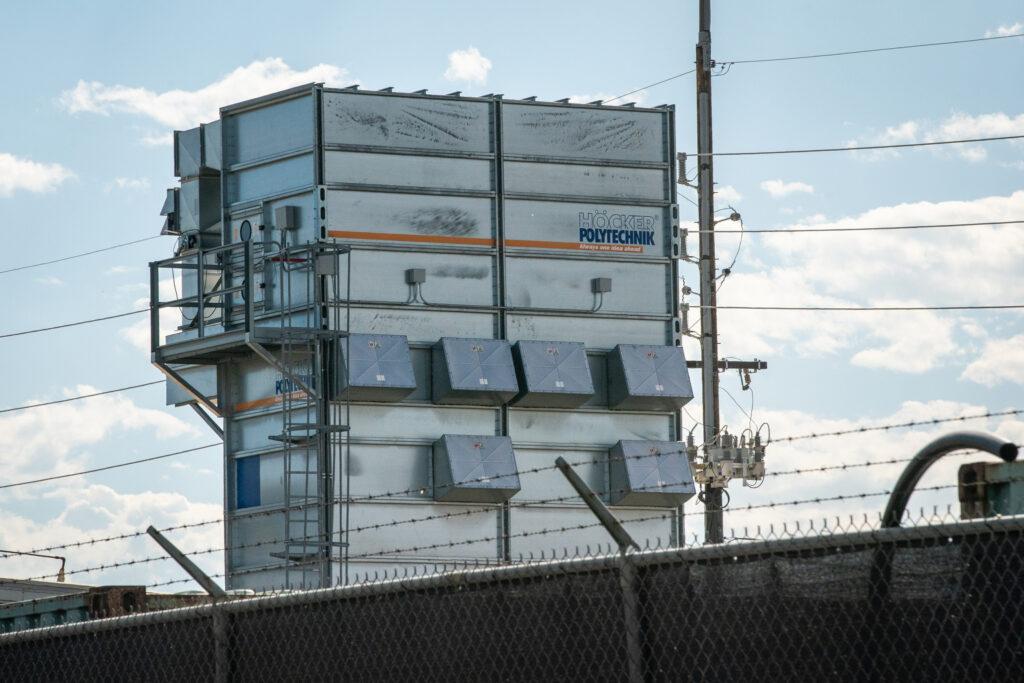How scientific road trips through metro Denver found unexpected sources of air pollution


Mobile Laboratories Shed Light on Urban Air Pollution Sources
Residents in north Denver and Commerce City often experience poor air quality due to the presence of numerous industrial businesses and highways in the area. However, identifying the specific sources of pollutants can be challenging. A recent study published in the Journal of the Air and Waste Management Association highlights the role of mobile laboratories in providing a more accurate understanding of urban air pollution, particularly from smaller, less regulated businesses.
The study, conducted by researchers at the University of Colorado Boulder, involved driving instruments around the heavily polluted area for six days in the summer of 2022. The instruments were designed to detect volatile organic compounds (VOCs), which contribute to ground-level ozone, commonly known as smog, in Colorado’s Front Range. Exposure to certain VOCs can also have adverse health effects in the short or long term, according to the U.S. Environmental Protection Agency.
Identifying Surprising Pollution Sources
During the study, the researchers discovered that JK Concepts, a small architectural woodworking shop in north Denver, was releasing a significant amount of air pollution into the surrounding neighborhood. This finding emphasizes the importance of understanding and regulating hyperlocal sources of pollution, which may not be subject to the same level of scrutiny as larger industrial facilities.
Hart Van Denburg/CPR News
According to Madison Rutherford, a PhD chemistry student and co-author of the study, these smaller sources of pollution, like the woodshop, are not well understood and often lack the same level of regulation as larger facilities such as oil refineries. However, their impact on air quality can be significant.
Implications for Air Quality Monitoring
The study’s findings highlight the effectiveness of mobile air monitoring in identifying pollution sources that may go unnoticed by stationary monitors focused on larger industrial sites. By driving air quality monitors around the area, researchers were able to detect high levels of acetone and toluene, chemicals commonly found in products like paint thinner and varnish remover, near the woodshop. While the pollution levels outside the facility did not exceed federal limits for outdoor exposure, the results demonstrate the value of mobile monitoring in revealing localized sources of pollution.
Regulatory Actions and Sustainable Development Goals
The woodworking company’s pollution issue was not only identified by the CU Boulder study but also by a mobile van operated by the Colorado Air Pollution Control Division. The state investigation prompted the woodshop to report its toluene emissions, as it exceeded the reporting threshold. The woodshop, classified as a minor pollution source, is subject to reporting requirements for hazardous air pollutants. This regulatory action aligns with the Sustainable Development Goals (SDGs), particularly Goal 3 (Good Health and Well-being) and Goal 11 (Sustainable Cities and Communities), which aim to ensure healthy lives and promote sustainable development in urban areas.
Hart Van Denburg/CPR News
While the woodworking company, JK Concepts, promptly addressed the issues identified by regulators, the incident raises concerns about the potential impact of media attention and further investigations on legitimate businesses. It underscores the need for a balanced approach to addressing air pollution issues while supporting the growth and sustainability of businesses.
By leveraging mobile air monitoring technologies and implementing effective regulatory measures, policymakers can work towards achieving the Sustainable Development Goals, particularly Goal 11, which aims to make cities inclusive, safe, resilient, and sustainable. Ensuring clean air and protecting public health are essential components of sustainable urban development.
SDGs, Targets, and Indicators
1. Which SDGs are addressed or connected to the issues highlighted in the article?
- SDG 3: Good Health and Well-being
- SDG 11: Sustainable Cities and Communities
- SDG 12: Responsible Consumption and Production
- SDG 13: Climate Action
- SDG 15: Life on Land
2. What specific targets under those SDGs can be identified based on the article’s content?
- SDG 3.9: By 2030, substantially reduce the number of deaths and illnesses from hazardous chemicals and air, water, and soil pollution and contamination.
- SDG 11.6: By 2030, reduce the adverse per capita environmental impact of cities, including by paying special attention to air quality and municipal and other waste management.
- SDG 12.4: By 2020, achieve the environmentally sound management of chemicals and all wastes throughout their life cycle, in accordance with agreed international frameworks, and significantly reduce their release to air, water, and soil to minimize their adverse impacts on human health and the environment.
- SDG 13.2: Integrate climate change measures into national policies, strategies, and planning.
- SDG 15.1: By 2020, ensure the conservation, restoration, and sustainable use of terrestrial and inland freshwater ecosystems and their services, in particular forests, wetlands, mountains, and drylands, in line with obligations under international agreements.
3. Are there any indicators mentioned or implied in the article that can be used to measure progress towards the identified targets?
- Indicator for SDG 3.9: Number of deaths and illnesses attributed to hazardous chemicals and air, water, and soil pollution and contamination.
- Indicator for SDG 11.6: Ambient air pollution (measured in PM2.5 concentration).
- Indicator for SDG 12.4: Release of hazardous air pollutants (e.g., toluene) by businesses.
- Indicator for SDG 13.2: Integration of climate change measures into national policies and strategies.
- Indicator for SDG 15.1: Extent of forest cover and forest loss.
Table: SDGs, Targets, and Indicators
| SDGs | Targets | Indicators |
|---|---|---|
| SDG 3: Good Health and Well-being | Target 3.9: By 2030, substantially reduce the number of deaths and illnesses from hazardous chemicals and air, water, and soil pollution and contamination. | Indicator: Number of deaths and illnesses attributed to hazardous chemicals and air, water, and soil pollution and contamination. |
| SDG 11: Sustainable Cities and Communities | Target 11.6: By 2030, reduce the adverse per capita environmental impact of cities, including by paying special attention to air quality and municipal and other waste management. | Indicator: Ambient air pollution (measured in PM2.5 concentration). |
| SDG 12: Responsible Consumption and Production | Target 12.4: By 2020, achieve the environmentally sound management of chemicals and all wastes throughout their life cycle, in accordance with agreed international frameworks, and significantly reduce their release to air, water, and soil to minimize their adverse impacts on human health and the environment. | Indicator: Release of hazardous air pollutants (e.g., toluene) by businesses. |
| SDG 13: Climate Action | Target 13.2: Integrate climate change measures into national policies, strategies, and planning. | Indicator: Integration of climate change measures into national policies and strategies. |
| SDG 15: Life on Land | Target 15.1: By 2020, ensure the conservation, restoration, and sustainable use of terrestrial and inland freshwater ecosystems and their services, in particular forests, wetlands, mountains, and drylands, in line with obligations under international agreements. | Indicator: Extent of forest cover and forest loss. |
Source: cpr.org








